Citizen gardeners, please help us choose the 2023 Unofficial Pollinator Plant of the Year. The vote, once again, casts purple vs. yellow.
On the heels of Cowpen daisy (2019), Gregg’s purple mistflower (2020), Frostweed (2021), and Gayfeather (2022) the candidates for this year’s under-appreciated pollinator plant are: Mealy Blue Sage and Zexmenia.
Started in 2019 by the Texas Butterfly Ranch, the Unofficial Pollinator Plant of the Year campaign aims to raise awareness of the unsung plant heroes of the pollinator garden. Many worthy, native plants are frequently unavailable and ONLY found at seasonal pop-up plant sales. If you miss these occasional plant sales, you’re out of luck.
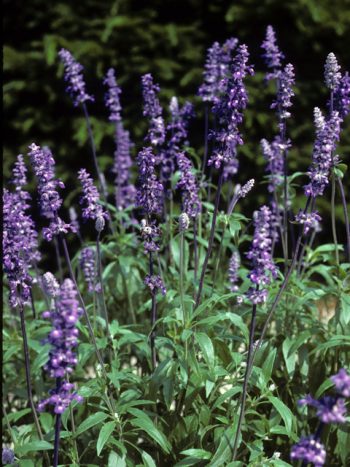
Mealy Blue Sage. –Photo courtesy Ladybird Johnson Wildflower Center
Commercial and retail nurseries cite “lack of demand” as the reason these plants are absent from their stores. Another reason is that some natives are persnickety to grow, sometimes taking two years to reach a mature enough stage to warrant customer interest.
That said, our Unofficial Pollinator Plant of the Year initiative aims to drive demand for more native plants at gardening centers, local nurseries and big box stores. We encourage you to request these plants when shopping to stock your landscape.
But first, please vote. As occurred last year, the contest pits purple against yellow blooms. Why is that?
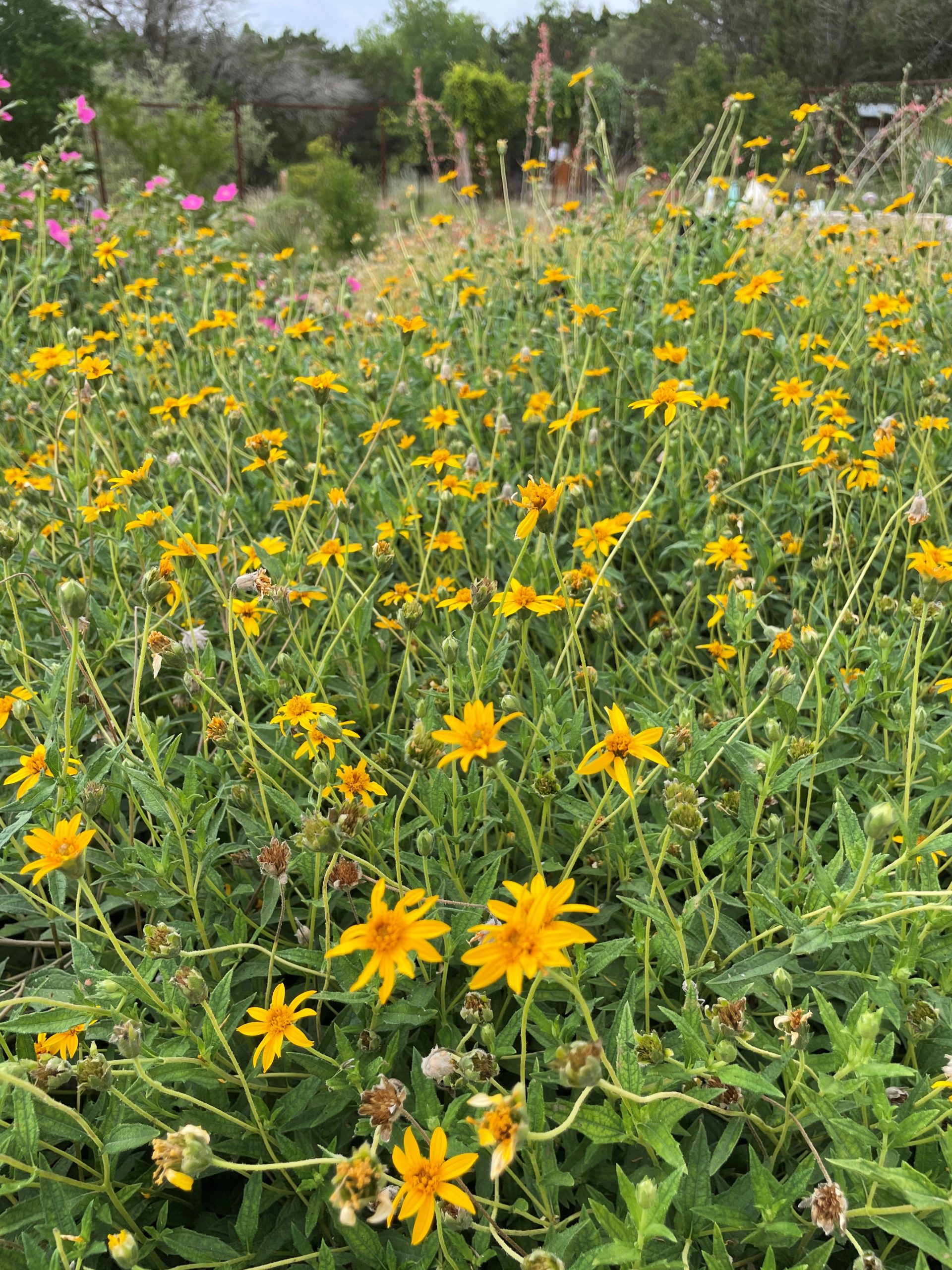
Zexmenia a.k.a. Wedelia. –Photo courtesy Haeley Giambalvo
It seems that especially late in the season, purple and yellow flowers dominate. No one knows why for sure, but some speculate that these pigments are less demanding than others when water is scarce. Another possibility: purple and yellow wavelengths of light may be easier for pollinators to find, thus encouraging reproduction of the species.
When asked by a reader “What percentage of the world’s flowers are blue? red? white? yellow?” the Ladybird Johnson Wildflower Center’s beloved Mr. Smarty Plants responded in a 2007 post that the question could not be answered because no one has surveyed the entire universe for plant color. He added that plant bloom colors change with time and conditions.
“If we had to rank the four colors you asked about in order from most common to least, we would guess–and we emphasize guess, here–that they would line up like this: 1. white, 2. yellow, 3. blue, 4. red,” he surmised.
“Once again, this is a win-win,” said Lee Marlowe, president of San Antonio’s chapter of the Native Plant Society of Texas. “These two candidates are great picks, and either way, pollinators and the landscape benefit.”
Both nominees, one a member of the Mint family, the other an Aster, provide for pollinators. They offer fuel for butterflies, bees and others. Both are drought tolerant, available in seeds and plugs, and require little maintenance.
The nominees are….
Mealy blue sage, Salvia farinacea
Mealy blue sage stuns, especially late in the season. The fuzzy purple and white sepals of this native bloom much of the year–from spring through fall. Butterflies and bees love its velvety spirals, which reach two – three feet in height.
The leaves are aromatic and make it deer resistant.
“Mealy Blue sage is a hardy perennial, drought tolerant, with beautiful upright blooms lasting all summer,” said Nancy McClintock, Treasurer for the Gardening Volunteers of South Texas and the organization’s liaison with San Antonio Water System, which promotes native landscaping through its GardenStyleSA website. McClintock added that it’s also a great companion plant for some vegetables to deter moths and beetles.
Zexmenia, Wedelia acapulcensis var. hispida
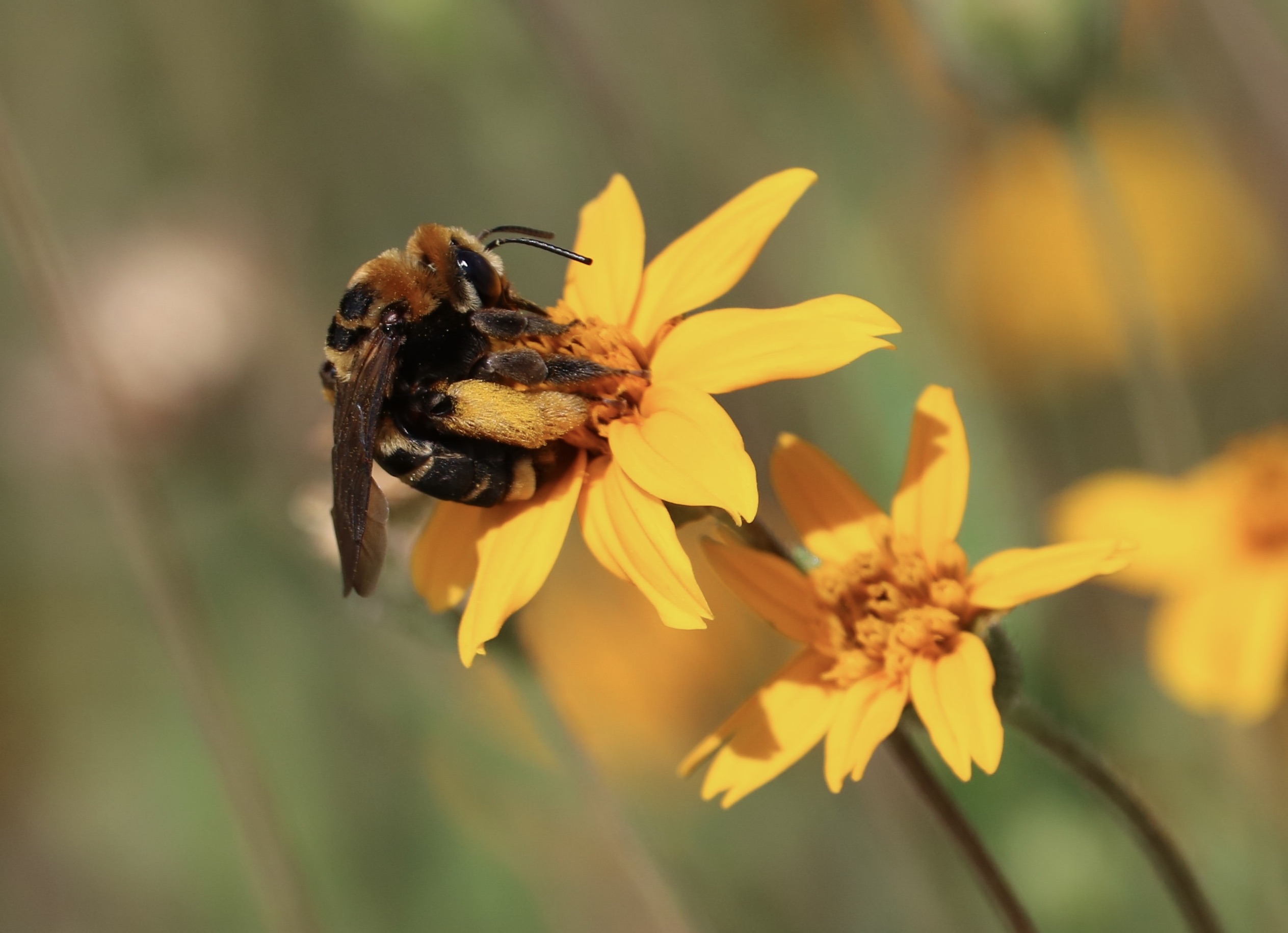
Long horned bee on Zexmenia. –Photo courtesy Lee Marlowe
Also known as Wedelia and Texas Creeping-oxeye, Zexmenia grows as a small shrub, from 8 in. to three feet. Small, daisy-like flowers offer themselves from May through November. It draws bees and other pollinators and serves as host plant to the Bordered Patch and Sierran Metalmark butterflies.
McClintock said she “loves” Zexmenia. “It’s a compact, non-invasive, quasi deer proof, drought tolerant and has availability!”
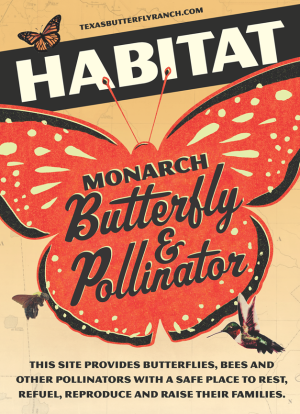 So…a difficult choice, but what do you say? Please vote here.
So…a difficult choice, but what do you say? Please vote here.
We’ll report results in early February.
Get on the map with 1,015 other gardeners by signing up for our pollinator habitat challenge HERE.
Want to let your neighbors or HOA know why your pollinator garden looks the way it does? Get a pollinator habitat sign that announces your intentionality.
TOP PHOTO: Courtesy Ladybird Johnson Wildflower Center
Related articles:
- Past “Unofficial” Pollinator Plants of the Year
- Mostly native urban pollinator garden outperforms lawn every time
- Flower “bed” works overtime as bachelor pad for solitary bees
- Trinational friendship garden woos pollinators and their fans to Confluence Park
- Doug Tallamy proposes crowdsourcing a homegrown national park: Who’s in?
Like what you’re reading? Don’t miss a single article from the Texas Butterfly Ranch. Sign up for email delivery at the bottom of this page, like us on Facebook, follow us on Twitter, @monikam or on Instagram.

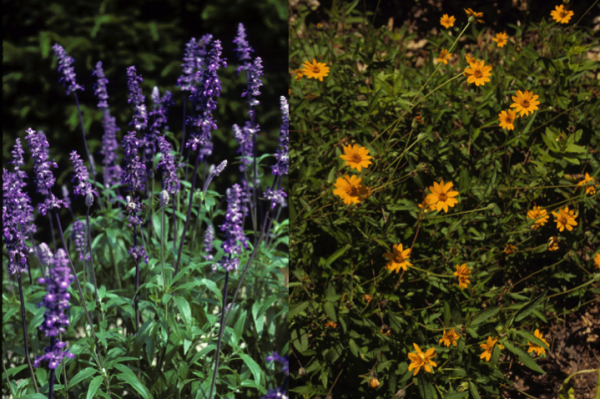
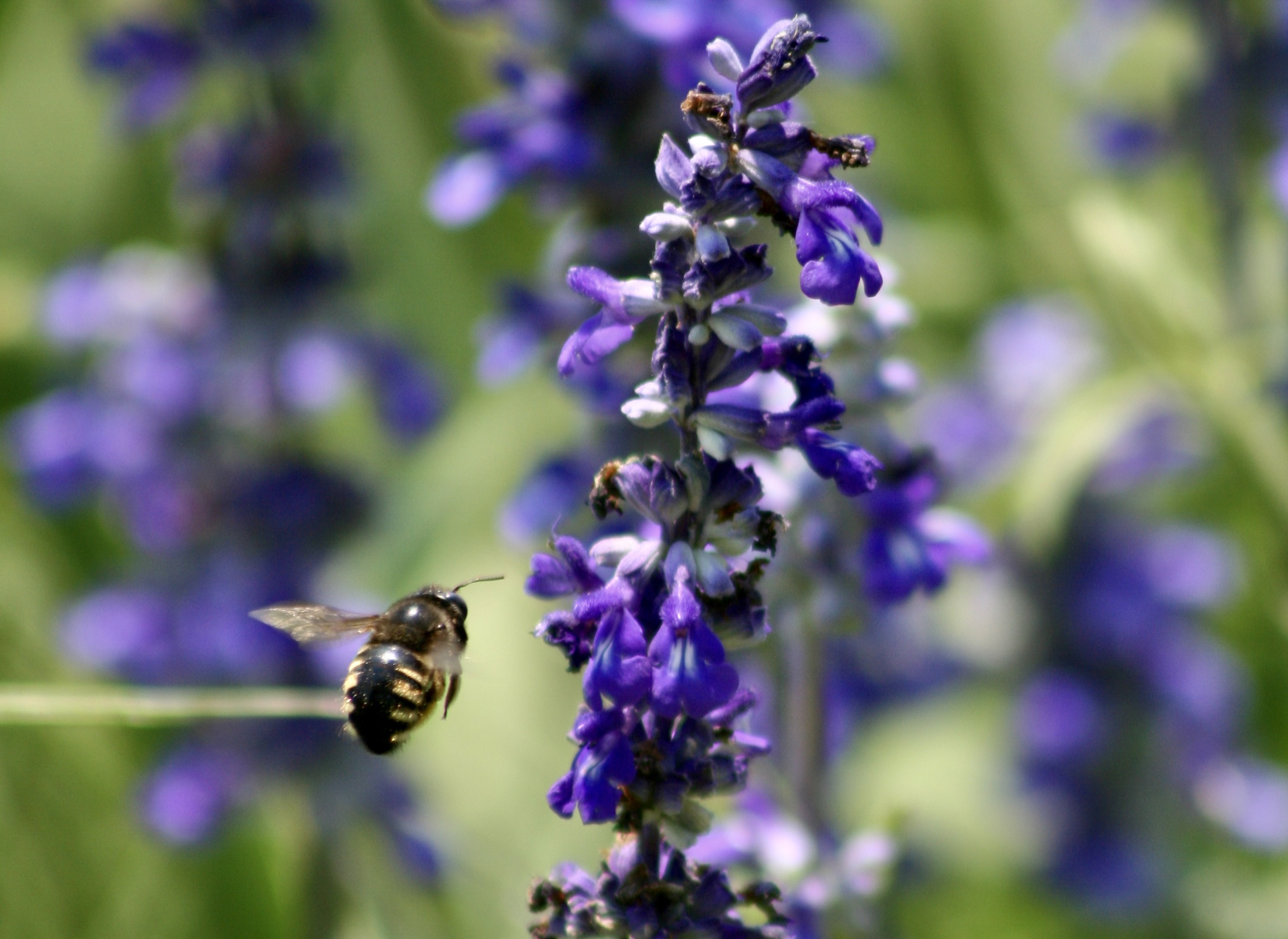
Well since I only have blue sage in my yard I’ll go with Blue Sage, but there are bigger stars in my yard one that attracts the most bees is my Coral Vine it climbs to the top of bushes along one fence and is covered with bees the moment the flowers bloom June to October or until first freeze. Had 2 but the dark pink almost red attracts 1000’s but the light pink hardly any
I chose the blue sage because we apparently don’t have Zexmenia. Here in the north.
Love them both but….
have to pick….
Mealy Blue Sage!
I vote blue sage (mealy)
i love this idea in general. however, why do we want big box stores (or even small nurseries) to sell these plants UNLESS they are not using systemic pesticides in production? do we want to buy plants that will poison the pollinators feeding on them? as for voting – my choice would be mealy cup sage. thanks for helping gardeners learn to provide food and habitat for the insects et al- and let’s make sure they are creating healthy habitats!
I think Mealy Blue Sage is a slightly better choice for two reasons. one, it’s more abundant in natural environments, and two, it’s much easier to plant or transplant.
Homer
I have both in my backyard garden in Allen, TX. I only have them because I bought them at a native plant sale. My zexminia has now established itself very well! I’ve had it planted for about 4 years. It has spread out very nicely! I just planted mealy blue sage last spring. I’m sure it will be back and do well this spring and summer. I’m so torn, but I think my vote will go for zexmenia!
Mealy Blue Sage the bee love them.